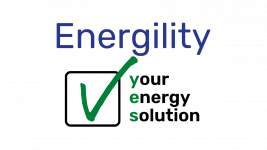Happy Energy Efficiency Day! We are going to revisit the 4 T’s Energility uses when looking to reduce energy consumption in a building: first energy conservation and then energy efficiency. The article “The Difference Between Water Conservation and Efficiency” on watercalculator.org (link) describes efficiency as “well-engineered products and fixtures” and conservation as “all of the policies, programs and practices designed to help people change their behaviors.” Steps 1 through 4 start with measures that conserve energy and end with ways to use energy efficiently.
- Turn it off –
The simplest way to reduce the amount of energy being used is to turn it off. When electric powered equipment is off it is not using or wasting energy. Note – some electronics use small amounts of energy to power internal parts (i.e., a digital clock on a kitchen appliance) and may need to be unplugged or use a “smart” power strip when not in use to completely power it off.
By turning off or unplugging an appliance you are not using, you are conserving energy that is otherwise wasted.
- Turn it up or down –
The second concept is to use only what you need. Instead of lighting up a whole room, use a task light or, better yet, natural light if it’s available. When you are not going to be home for most of a day, adjust the heat or A/C. Myth – it does not take more energy to heat or cool it later.
This is another conservation measure because it reduces energy use by changing behaviors.
- Tune it up
We take our vehicles to the mechanic or dive under the hood to see what’s wrong when we hear a mysterious noise over the jams on our radio. Most (if not all) mechanical/ electrical equipment needs regular maintenance. Proper maintenance of your equipment keeps it operating most efficiently. Tip – include the cost of future maintenance when considering purchase of new equipment.
This step is an efficiency measure because by keeping equipment running at its peak, it will use less energy.
- Time for a new one
After deciding the first 3 T’s don’t get the job done, then it’s time to look at replacing old equipment or appliances with new ones. Good idea – consider additional non-energy benefits which you can obtain by using the new product such as increasing safety of the space or lowering future maintenance costs.
Depending on the age and condition of current appliance or equipment purchasing new items can save considerable energy. Many new items use newer technologies that require less energy to run.
These are the 4 T’s of our energy consulting approach. We take this approach when walking into a business, but these are actions one can use to make decisions about energy use in their homes as well. Conservation and efficiency are two different actions that help everyone by using less.
